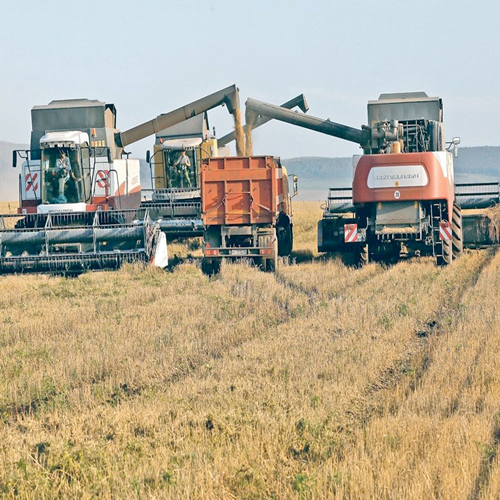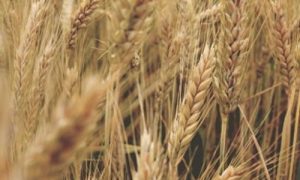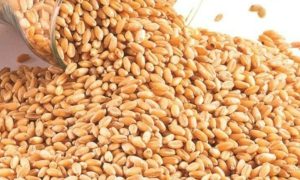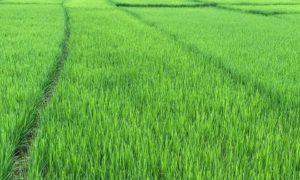Algeria tapping the global wheat market

Algeria secured up to 600,000 metric tonnes of milling wheat in a June shipment tender, favoring Black Sea origins over traditional supplier France amid ongoing diplomatic tensions. Despite ambitions for durum wheat self-sufficiency by 2025, imports persist. With wheat demand forecast to rise and domestic yields plateauing, Algeria remains a top global wheat importer, influenced by consumption habits and climate constraints.
ALGERIA raided the global wheat coffers again last week, with the state-owned Office Algérien Interprofessionnel des Céréales (OAIC) announcing an international tender for soft milling wheat of any origin for shipment in both the first and second half of June.
Once the offers were collated, the OAIC reportedly booked between 570,000 and 600,000 metric tonne at around USD267.50 per metric tonne (≈AUD422.80/mt), cost and freight (C& F) included.
This purchase follows a similar foray into the international market back in mid-March, which resulted in a purchase of 450,000mt of milling wheat at USD268.50/mt (≈AUD424.30/mt) C&F.
The big surprise when the results became evident on Wednesday of last week was the absence of French sellers amongst the unofficial list, with the Black Sea region expected to do the heavy lifting, especially Ukraine and the Constanta/Varna/Burgas (CVB) ports of Romania and Bulgaria.
Weakness in MATIF futures early last week had brought French and other western EU wheat back into contention against the Black Sea values, raising hopes that the region could win some of the business.
The snubbing of French offers, and a rise in the Euro against the US dollar pushed the benchmark May milling wheat contract on MATIF 0.6 percent lower on the day to close fractionally above the contract low at €209/mt.
The contract rallied slightly into the Easter long weekend on the back of renewed tariff jitters to close Thursday trade at €211.25/mt.
Algeria was once France’s largest export market, and comments from the French foreign minister a week earlier that ties with Algeria were back to normal following months of bickering had raised hopes that French wheat may feature in the latest tender results.
“We are reactivating, as of today, all the mechanisms of cooperation in all sectors. We are going back to normal and to repeat the words of President Abdelmadjid Tebboune: ‘The curtain is lifted’,” Jean-Noel Barrot said in a statement at the presidential palace in Algiers after two and a half hours of talks with the Algerian president.
Political and trade ties between Paris and Algiers have been complicated for decades, but they took a turn for the worse in July last year when French President Emmanuel Macron angered Algeria by recognising a plan for autonomy for the Western Sahara region under Moroccan sovereignty.
Traders say the ongoing diplomatic rift led Algerian grains agency OAIC to tacitly exclude French wheat and merchants in its import tenders since October last year, and that continued last week.
OAIC has regularly stated that it treats all suppliers fairly, applying technical requirements to all tender purchases.
High production goals
Meanwhile, Algeria’s 2025-26 winter crops are approaching harvest, with production forecasts on par with last season’s final numbers.
Wheat and barley are the main crops grown each season, predominantly in the northern provinces, with durum wheat accounting for the most significant portion.
Over the past ten years, durum wheat has risen in prominence to now make up around 45 percent of the total cropped area.
The Algerian president announced in September last year that the country was on track to achieve self-sufficiency in durum wheat production by the end of 2025.
However, durum wheat imports in the first eight months of the 2024-25 marketing year were still 860,000mt.
The Algerian government has set ambitious agricultural goals to bolster production, including expanding cultivated areas in southern Algeria to 500,000 hectares.
Time will tell, but slow irrigation development and lacklustre production growth renders the goal and timeline highly unlikely.
Barley is also an extremely important crop, at just over 33pc of the planted area, and bread wheat accounts for about 15pc.
The climate in Algeria does not favour bread wheat production, as these varieties are very sensitive to the arid conditions prevalent across much of the country.
The remaining cropland area is used for feed crops (alfalfa, corn and oats), pulses (chickpeas and lentils), and oilseeds (peanuts, soybeans, and sunflower seeds).
Satellite imagery shows that current season crop health and vegetation density in the east and central areas of the country are similar to the average of the last five years, while dry conditions plague western regions of Algeria and are at the low end of the index range.
Assuming an average close to the season, the USDA’s Foreign Agricultural Service (FAS) is currently forecasting wheat production to be the same as 2024-25 at 3 million metric tonne.
This is off a harvested area of 2.08 million hectares for an average yield of 1.45mt per hectare.
Barley production is also unchanged year-on-year at 1.2mmt off a harvested area of 1.03 million hectares and an average yield of 1.17mt/ha.
Major wheat importer
Algeria remains a major consumer of cereals, with wheat the primary food staple.
FAS expects wheat demand to increase slightly from 11.8mmt to 12mmt in 2025-26.
The latest supply and demand estimates from the USDA place Algeria fourth on the list of major wheat importers in the current season at 9.4mmt, behind Egypt, Indonesia and the European Union.
That is expected to be similar in 2025-26 basis the current harvest and consumption ideas.
According to international trade data, Algeria’s wheat imports were running ahead of last season’s record- breaking volumes through the first half of the season before levelling off in recent months.
The tapering in Russian grain exports, in conjunction with the ongoing French tensions, are the most likely reasons.
According to the Algerian Organization for the Protection of the Consumer (APOCE), the nation is the second-largest bread consumer in the world behind Turkiye, eating almost 110 kilograms of bread per capita per annum.
Durum wheat is used to produce pasta and couscous, the latter a traditional dish served across Algeria at least weekly.
Australia is a minor supplier of durum wheat to Algeria, with a two-port cargo loaded out of Newcastle and Geelong in February, the first shipment since March of last year.
Total sales since October 2020 are 301,000mt.
Barley is primarily consumed as grain in stockfeed rations by sheep, cattle, and camels, with small amounts consumed as green fodder.
An increase in animal numbers over the past five years, particularly sheep, has overall barley consumption trending upwards.
Minor amounts are used for traditional human foods such as couscous and bread, while Algeria’s breweries consume small quantities of malting barley, generally imported from Europe.
Weather-related pasture conditions heavily influence barley demand, with poor fodder growth generally resulting in heightened import volumes.
FAS expects imports in 2025-26 to be the same as the current season at 700,000mt, but that could easily rise if the drought-declared area increases over the coming summer months.
To Read more about Wheat News continue reading Agriinsite.com
Source : Grain Central















